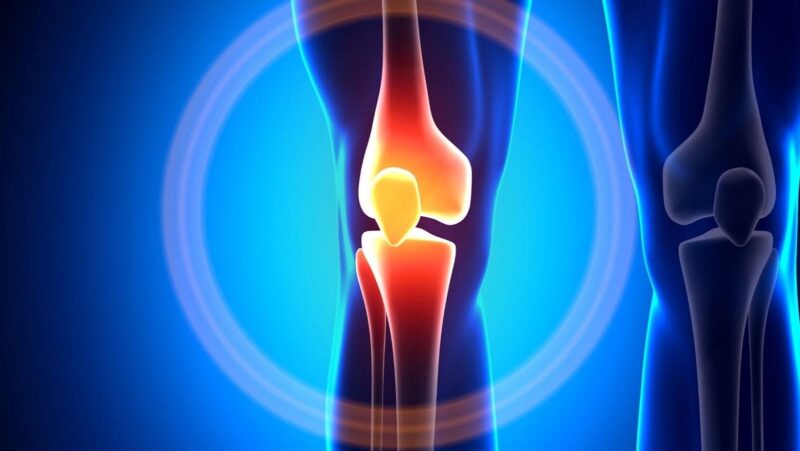Calculating macros is a tricky subject. If you’ve ever tried to calculate your macros on your own, you understand why. You can try using a calculator, which is a pain. Or you can buy a macro calculator, which is a pain. Or you can use a formula. But those formulas can be a pain. So how can you make this process as easy as possible? There’s a better way.
If you’ve ever tried to use the calculator available on the MyFitnessPal website to calculate your macros, you probably found it to be frustrating. The keypad algorithm is not intuitive, and it’s difficult to get your numbers to line up with the recommended daily calorie intake without a calculator. Today, we’ll show you a simpler, more accurate way to calculate your macros, and the easiest way to do so.
The word “macro” refers to the amount of protein, fat and carbs you consume per day. But how do you calculate the number of grams of protein, fat and carbs you need each day? The MFP Blog offers a step-by-step guide to calculating the most precise and easy way to calculate macronutrients.
This article includes affiliate links, and if you buy anything via our site, we may earn a small fee.
With this free keto calculator, you can learn how to calculate macros for a low carb or keto diet. This is the most accurate keto macro calculator available, and it will assist you in determining the optimal macros for your objectives. Plan your weekly low-carb meal using a keto calculator and discover all you need to know about getting started.
This keto calculator is the best for you, no matter what your aim is. This low carb macro calculator can assist you in determining the best macros for weight reduction and other purposes.
Our macro calculator is designed to provide you with the most accurate keto macros possible. This free ketogenic diet calculator can assist you in achieving your weight loss, maintenance, or muscle mass goals.
What are the macros I’m using? What is the best way to compute macros? Use the finest low carb and keto diet calculator to calculate macros and find out how many calories you need each day to achieve your goal.
Calculator for Keto Diet
Put your information into the keto diet macro calculator below and let it work its magic to calculate your macros. Our macro calculator is unusual in that it allows you to get free keto macros through email! Simply enter your email address and click “Sent Results.”
The Best Keto Macro Calculator for Free
Male Female Gender
Age years
Using the images below, choose your body fat percentage.
Use our graphic guide to calculate your body fat percentage.
Goal
Maintain Weight Loss and Muscle Gain
%
Is it true that there is no surplus? To develop muscle, choose a greater surplus!
A maximum excess of 15% is recommended.
You’re going to acquire weight. Choose a surplus that is lower!
Is there a 0 deficit? To lose weight, choose a larger deficit.
If your deficit is insufficient, select a larger deficit to lose weight.
Highly active individuals are advised to take a little deficiency.
DEFICIT IN THE MIDDLE, To lose weight, choose a larger deficit.
DEFICIT IN THE MODERATE RANGE, which is ideal for weight reduction with little effort.
MAJOR DEFICIT, keep it to a 20% deficit.
STRICT DEFICIT, which is difficult to sustain. Keep your debt to a maximum of 20% of your income.
WARNING! You’ll begin to lose muscular mass.
Do you want to eat a lot of protein?
g
You may choose between 0.6 and 0.8 grams of protein.
Protein options are 0.8g and 1.0g.
Protein options are 1.0g and 1.2g.
To receive your macros, fill out all of the fields.
Thank you very much! Your findings have been sent to you.
Something didn’t work out. Please try one more.
Low Carb and Keto Macro Calculator Frequently Asked Questions
Check out the FAQ section below for answers to any queries you may have. If you have any more queries, please share them in the comments section below. I’d be delighted to respond to your inquiries.
What is a Ketogenic Diet, and How Does It Work?
Let’s begin by understanding or recalling what a keto diet is. The keto diet, commonly known as the keto diet, LCHF (low carb high fat), or low carb diet, is a kind of ketogenic diet. The fundamental idea is to consume meals that are rich in fat, moderate in protein, and low in carbohydrates.
Reduce your carb consumption and replace it with nutrient-dense meals to enter ketosis, a metabolic state in which your body transforms into a fat-burning engine. Ketones, rather than glucose, are preferred by most of our bodily organs.
The ketogenic diet’s traditional macros are usually as follows:
- 70-80% of calories come from fat.
- Protein accounts for 20-25 percent of total calories.
- Carbohydrate calories account about 5-10% of total calories.
What exactly are macros?
The term “macros” refers to carbs, protein, and lipids, which are all macronutrients. They are required for our bodies to operate properly, and each one supplies energy in the form of calories.
Carbohydrates and protein contain 4 calories per gram, whereas fats (lipids) have 9.
A ketogenic diet entails consuming less carbohydrates, such as sugar and starchy vegetables. There are many advantages to switching to a nutrient-dense keto diet plan that contains high-quality protein and more healthy fats.
What Are the Benefits of Using a Keto Diet Calculator?
Using our keto calculator, you can figure out how many macros you need to meet your objectives. Because our bodies are all different, it’s critical to customize the macros to your particular needs.
The following are some of the reasons why you should calculate your macros:
- to be able to estimate how much to consume;
- Faster entry into ketosis and maintenance of this excellent metabolic state;
- Enjoy your favorite keto meals without having to estimate how much you need to eat;
- reduce weight quickly, maintain or build muscle;
- 100% optimized for your objectives;
Enter a few parameters into our easy macros calculator to obtain the keto diet results you desire. I’ll explain why it’s critical to enter data properly in all fields in the next sections.
What is the formula for calculating macros? Is it correct?
This keto macronutrient calculator was created by some of the finest programmers and has been thoroughly tested.
To calculate your daily calorie needs, we utilize the most precise BMR calculation (the Mifflin-St.Jeor Formula). The amount of calories you burn when resting is known as your basal metabolic rate (BMR).
The following variables are required for this formula:
- Gender: Your gender is related to biological differences in body composition.
- Height & Weight: Needed to know the body fat distribution
- As you get older, you may find that eating everything you want and being small becomes more difficult. This is due to the fact that our BMR lowers as we become older.
How Do I Use the Best Keto Calculator to Lose Weight?
Learn how to calculate your daily ketogenic macros with our keto calculator.
Choose the appropriate unit of measurement (imperial or metric) and enter all of the necessary information:
- gender
- age
- height
- weight
- physical activity level
Decide how many carbohydrates you like to consume, the calorie deficit, and your daily carbohydrate consumption if you use our Advanced Calculator.
Decide how many carbohydrates you like to consume, the calorie deficit, and your daily carbohydrate consumption if you use our Advanced Calculator.
Which of the options should I choose? Advanced Keto Calculator vs. Classic Keto Calculator
I have to admit that you were the first person who sprang to mind while we were developing the calculator. You may compute your macros in one of two methods. There’s a basic one and a more sophisticated keto macro calculator.
The basic one provides you with the typical keto macros seen in a ketogenic diet.
You may complete the exact deficit, targeted carb consumption, and protein in the advanced version.
Use the basic keto calculator if you’re new to the keto diet.
The advanced macro calculator should be used more often the more advanced you are and the more physical activity you incorporate in your daily routine.
Why is it necessary for me to enter my activity level?
We need this information to figure out how much energy you use on a daily basis (TDEE).
Because it reflects the overall amount of calories we burn, TDEE is an important component in calculating your macros. The TDEE value is important in our macro calculator since we use it instead of BMR to calculate calorie intake while counting macros.
It is a common misconception that to lose weight, you must consume less calories than your BMR. This is not true.
The TDEE informs us how many calories we should eat in order to achieve our objectives quickly.
What do you hope to achieve by following a ketogenic diet? Lose weight, maintain muscle mass, or gain muscle mass
Here you may enter your main reason for following a keto diet into our simple keto calculator.
This will assist the calculator figure out if you’re aiming to lose weight, maintain your current weight, or build muscle. It calculates the deficit (or surplus), as well as the recommended calorie and protein intake, to help you reach your ultimate target.
If you used our easy keto macro calculator, you should already have your results and be on your way to achieving your objectives.
Continue reading the instructions below if you want to learn more about how the advanced macro calculator works.
Should I use the Keto Macro Calculator’s “deficit” or “surplus” option?
You must select whether you are in a calorie deficit or excess at this stage in order for us to compute your ultimate caloric consumption.
- We suggest a calorie deficit of 20-24% for weight reduction, which is very simple to maintain and will help you lose weight and enter ketosis without effort.
- Keep the bar at 0% if you want to maintain your weight since you don’t need to be in a deficit.
- If you work out hard and want to develop muscle or weight, select a surplus of 10-20%.
What is the Best Net Carb Intake?
You can consume more or fewer net carbohydrates every day depending on your objective.
Total Carbs – Fiber = Net Carbs (sugar alcohols )
We suggest the basic keto diet, which requires you to select between 20 and 50 grams of net carbohydrates.
How Do I Choose Keto Protein Macros?
Protein is the body’s “brick” for construction. The majority of our bodily organs, such as muscle, skin, and bones, are made up of protein.
Protein is required for the proper functioning of the digestive system, immune system, and blood.
Proteins include hormones, antibodies, and enzymes. Protein is used by the body to create and repair tissues.
- Choose between 0.6g and 0.8g Protein if you’re sedentary.
- Choose between 0.8g and 1.0g protein if you’re active.
- Choose between 1.0g and 1.2g protein if you lift weights.
We must first determine your lean body mass in order to calculate the protein macro. Protein is critical in the ketogenic diet because you must consume enough to reduce weight while avoiding muscle loss. Excess protein may knock you out of ketosis and cause serious problems.
What Should You Eat If You’re on a Keto Diet?
Most individuals achieve profound healing ketosis by eating less than 30 grams of net carbohydrates per day, but we’re all different, with various metabolisms and body compositions. You must figure out what works best for you, using the findings from our keto calculator as a starting point.
It’s critical to eliminate any hidden sugars and stick to the keto-approved meals listed on my website. When you’re not sure whether a meal is keto-friendly, print it out and review it.
- Pork, poultry, fish, beef, and lamb are all examples of meats.
- Eggs
- Avocado
- Spinach, kale, and lettuce are examples of leafy greens.
- Broccoli, cauliflower, cabbage, and mushrooms are examples of above-ground vegetables.
- Butter, hard cheeses, and high-fat cream are examples of high-fat dairy.
- Macadamias, almonds, pecans, walnuts, and sunflower seeds are examples of nuts and seeds.
- Raspberries, blueberries, blackberries, and other berries
- Stevia, allulose, erythritol, monk fruit, tagatose, and inulin are examples of sweeteners.
- Coconut oil, high-fat salad dressing, saturated fats, and other fats
Make a list of your keto macros.
Congratulations for calculating your macros based on your objectives and present situation. Use an internet tool to keep track of everything you eat and attempt to meet those goals.
Don’t be concerned if you don’t get it right the first time. Don’t give up and give it your all. Once you’ve become accustomed to the macros in popular keto meals, it’ll be a lot simpler.
How Do You Work Out Your Net Carbs?
Net carbs are the carbohydrates that our bodies use as a source of energy. To determine net carbohydrates, start with the total amount of carbs and remove fiber and sugar alcohols from sweeteners.
Here’s a simple method for calculating net carbs:
TOTAL CARBS – FIBER – SUGAR ALCHOOLS = NET CARBS.
Now is the time to subscribe!
To be the first to hear about new recipes, changes, and special deals, sign up for our weekly email.
Thank you very much!
You have successfully subscribed to our our list.
FAVORITES OF READERS
The whole recipe may be found on the recipe card below. These recipes were created by readers who enjoyed this article:
One of the biggest questions people have about macro counting is the amount of food they need to eat to meet their macronutrient goals. The truth is, you can’t count calories the ‘old fashioned’ way because you’re probably not getting enough nutrition to meet your macronutrient goals.. Read more about how to find the most precise measurement and let us know what you think.
The most precise is a "}},{"@type":"Question","name":"Which tool is most precise?","acceptedAnswer":{"@type":"Answer","text":" The most precise tool is a laser."}}]}
Frequently Asked Questions
Which measurement is the most precise?
The most precise measurement is the millimeter.
Which of the following is most precise?
The most precise is a
Which tool is most precise?
The most precise tool is a laser.
Related Tags
This article broadly covered the following related topics:
- macro calculator
- best macro calculator
- free macro calculator
- macros
- macro calculator for fat loss and muscle gain

















